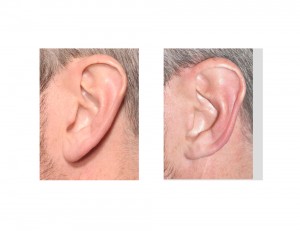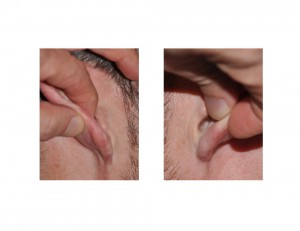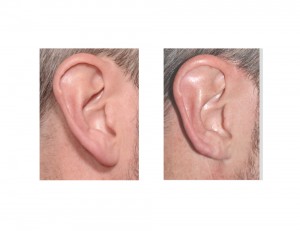Background: The ear has the most complex shape of any facial feature with its many convolutions and ridges. But because it is on the side of the head, it is not scrutinized as easily that of the eyes, nose and lips. The size of the ear is often overlooked unless it has abnormally big or too small. Ear size is often recognized in children because of its differential growth rate. The size of the ear develops quickly being almost fully grown as young as age 6 and certainly completely grown by puberty.
The height or vertical length of the ear differs between men and women. Studies have shown that male ears on average are longer being about 65mms. Women’s ears are not quite as long and have average lengths closer to just under 60mms. A significant part of the length of the ear is made up by the earlobe. The earlobe is different than the rest of the ear lacking any cartilage and being composed of only skin and fat. They make up about 1/3 of ear length and average about 20mms vertically.
Because the earlobe has no internal rigid structure, it is prone to growing (stretching) with ear ring wear and age. This can make the ear look longer as one ages. There are also some people who just naturally have a very longer ear and desire a vertically shorter one.
Case Study: This 40 year-old male felt that is ears were too long and wanted them reduced in length. By measurements from the top of the helix to the bottom of the earlobe they were 72mm. Both the earlobe and the top of the ear (superior 1/3) look big but the practical approach to reduction was to focus on the earlobes.


Case Highlights:
1) An acceptable aesthetic ear length is around 65mm for men and 60mms or less for women.
2) The earlobe makes up a significant part of the ear and is often the cause of an ear that is seen as too large or long.
3) Vertical ear shortening is most easily done by earlobe reduction using a helical rim reduction method which leaves no visible scars.
Dr. Barry Eppley
Indianapolis, Indiana



